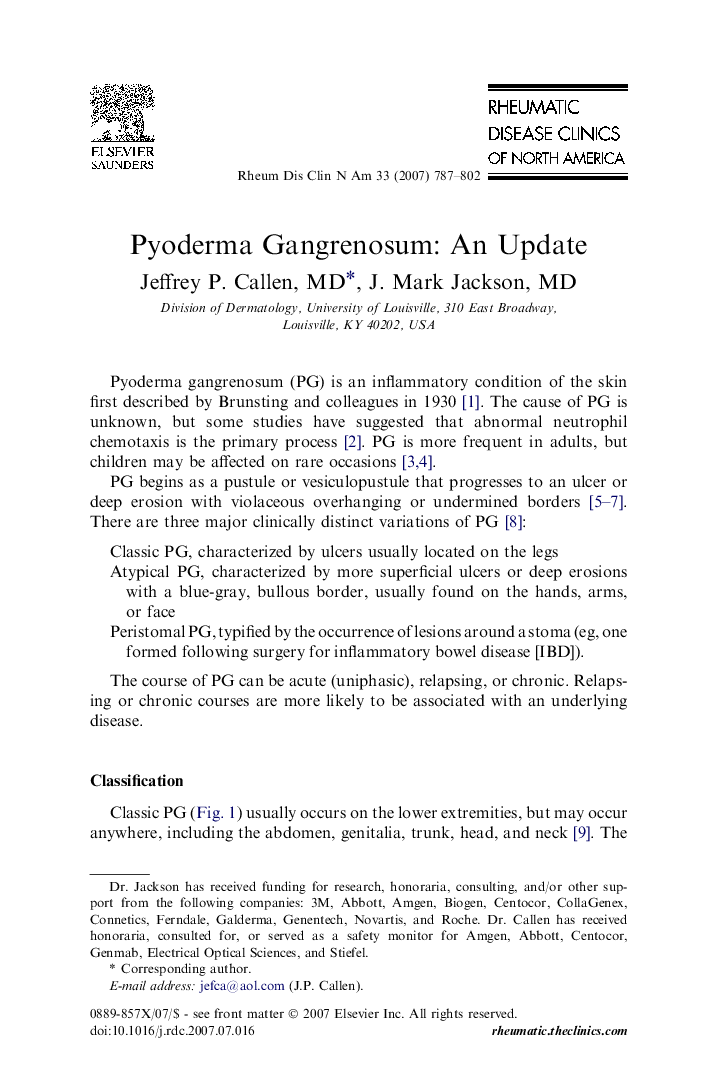| Article ID | Journal | Published Year | Pages | File Type |
|---|---|---|---|---|
| 3390781 | Rheumatic Disease Clinics of North America | 2007 | 16 Pages |
Abstract
Pyoderma gangrenosum (PG) can be differentiated into classic and atypical forms. The classic form is characterized by ulcers and the atypical form by deep erosions with bullous blue-gray margins. Pathergy, the development of cutaneous lesions at sites of trauma, is a common feature of both forms of PG. Approximately 50% of patients who have PG have underlying systemic diseases, most commonly inflammatory bowel disease, myeloproliferative disorders, and various forms of inflammatory arthritis. The diagnosis of PG is one of exclusion. The management of this disorder begins with treatment of any underlying disease and local or systemic glucocorticoids or immunomodulating therapies.
Related Topics
Health Sciences
Medicine and Dentistry
Immunology, Allergology and Rheumatology
Authors
Jeffrey P. Callen, J. Mark Jackson,
